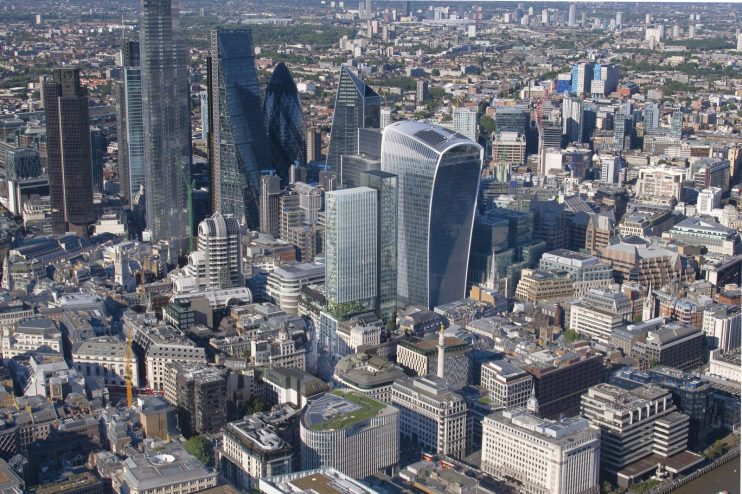Is central London finished? International investors think otherwise

It is a strange experience going into central London right now. Areas that are normally bustling with crowds or chaotic with commuters lie still – even Pret A Manger has reduced its menu and opening times. Those who live outside of Zone 1 and for whom memories of maroon coffee cups, the underground and the noise of other peoples’ keyboards are growing increasingly hazy, may find themselves wondering if London as they remember it is still even there. Investors in the London office market will be asking the same question.
After years of dominance due to its access to global talent and the quality of life it offers, has a global pandemic, three national lockdowns and an eleventh hour Brexit deal that still contains question marks about the financial services sector, changed London’s fundamentals as an attractive place for investment? The short answer is no, although it is certainly true that a lot has changed.
Read new: The future of cities: The age of urban miracles is not over
Remote working is once again as widespread as it was last spring, with recently released figures from the ONS reporting that about 36 per cent of adults are working exclusively from home, and we are likely to see a number of businesses reassess their requirements for office space going forward.
However, this does not mean we are now looking at the end of the London office market. Whether it is to facilitate creativity, collaboration and social interaction, or just to avoid the pure chaos that some virtual meetings have famously descended into lately, most businesses will need a workplace strategy that includes being in the office for at least part of the week.
In fact, data from Avison Young’s quarterly Central London Office Analysis report shows that investment volumes totalled £3.6 billion in the final quarter of 2020, demonstrating the resilience of London’s investment market. This represents nearly half of the year’s total investment of £7.8 billion and is more than three times the volume of the preceding quarter.
While there may have been some uncertainty and a lull in investment in mid-2020, with volumes dropping to £682 million in the second quarter of the year, we are now seeing this pent-up demand from international investors come into the market. Of the £3.6 billion that came into London’s office market between October and December last year, 89 per cent came from European and Asian investors.
This was most notable in the £552 million acquisition of 1 & 2 New Ludgate, EC4 by Singapore’s Sun Venture. The reality is that investors either like to see what they’re buying or are mandated to do so by their investment committee, and the travel restrictions that were in place for much of last year meant that a significant tranche of deals could not start to come to fruition until later in the year. We expect this trend to continue into 2021 and are seeing appetite from Hong Kong investors who are looking to get money into London ahead of any potential capital restrictions put in place at home, as seen in mainland China, in particular.
London is still very much an attractive destination for investors. Due to long leases, upwards only rent reviews and Full Repairing and Insuring leases, London is a landlord-friendly jurisdiction, with its safe haven status for international capital further supported by a sophisticated legal, tax and planning system and relatively low sterling strength.
Read more: New Skyscraper approved for City of London
Next, it offers higher yields than most of the core European cities, including Paris, Berlin, Munich and Frankfurt. We believe that the market for well-let trophy assets in central London will get more competitive as the year progresses and there is room for further yield compression.
Finally, while there has been speculation about the impact of Brexit on the London office market since the 2016 referendum, the sector has proved largely resilient. UK REITs that are focused on offices, such as Derwent or Great Portland Estates, have delivered a 2 per cent increase and 17 per cent decrease respectively in total return since the beginning of 2016, while some investors with a stronger exposure to retail alongside their office portfolios have seen their total returns fall more significantly over the same period.
This relative resilience is further supported by London’s diverse occupier base. While banking and finance still holds a decent chunk of London’s available office space, there has been a significant increase in the footprint of the technology, media and telecommunications, creative and government sectors. In the final quarter of last year, financial services was only 3 per cent ahead of government and services in office take-up, with TMT and creative a close third.
London is evolving, but it is still very much one of the world’s truly global cities. If our investment data and the early indicators from this year are anything to go by, it is also still very much in the line of sight for investors.
Read more: Property chiefs: Lockdown and end of stamp duty holiday push down house prices